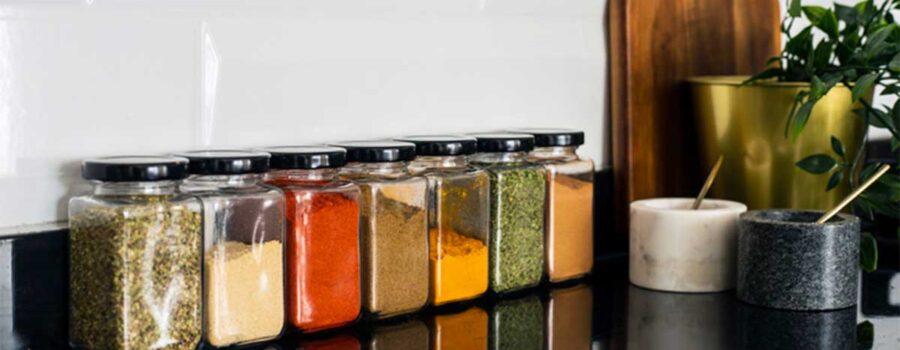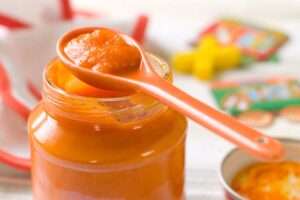I’ve got a bit of a surprising discovery that I think we should all be aware of, especially as we’re often the culinary wizards in our households. You know those spices we sprinkle on our food to give it that extra kick or flavor? Well, I was astonished to find out that there could be some unexpected visitors hiding in our spice rack – heavy metals, including lead and arsenic.
You might be scratching your head and thinking, “Come on, in my beloved oregano or thyme?” Well, that was my reaction too! But apparently, Consumer Reports found high levels of heavy metals in 40 out of 126 spice products they tested. They looked at all sorts of spices from brands you’d see every day on your grocery store run – McCormick, Walmart, Trader Joe’s, even the regional favorites like Penzeys.
Which Spices Are Potentially Contaminated with Heavy Metals?
Now, heavy metals are a bit of a nuisance. Our bodies can’t break these substances down or get rid of them effectively. This means they hang around in our systems, messing with important functions. It’s even worse for our kiddos. Lead exposure can cause behavioral problems and lower IQ as it disrupts brain development. As for us adults, lead can cause anything from nervous system problems to kidney damage and reproductive issues.
So, which spices should we be wary of? After an in-depth analysis, Consumer Reports found moderate to high levels of concern in La Flor Ground Oregano and Turmeric, Happy Belly (Amazon) Ground Thyme, Spice Islands Sweet Basil, and Tone’s Ground Thyme. Thirty-five other spices also raised some eyebrows with their lead content. Herbs and spices like basil, ginger, oregano, and thyme were often the culprits, but we can breathe easy with black pepper, coriander, curry powder, garlic powder, saffron, sesame seed, and white pepper.
But how do these pesky heavy metals get into our spices in the first place? It’s mainly through absorption from the soil and groundwater where they grow, contamination during processing, or even added intentionally outside the U.S. to enhance color (think back to how lead used to be in paints and pigments).
Practical Steps for Safer Spice Consumption
In the wake of this information, we need to be more cautious with our choice of spices. If you can’t avoid using basil or oregano, try to use them sparingly. Another option is to grow your own herbs and spices – you’ll know exactly where they’re coming from then! The Center for Agriculture, Food, and the Environment at the University of Massachusetts has some great advice on how to grow safer produce and minimize lead exposure.
Now, growing your own might not be feasible for everyone. When you’re shopping, arm yourself with knowledge and be critical. Brands with known heavy metal levels should be avoided, and consider choosing certified organic products, although remember that even these aren’t guaranteed to be heavy metal-free. It’s always a good idea to diversify your spice brands and sources, just to play it safe.
Conclusion
So, there we have it folks, a little unexpected information about the hidden dangers in our spice racks. Heavy metals in our everyday spices are a genuine concern. They can accumulate in our bodies, messing with our health and particularly affecting our children’s development.
By being a bit more discerning when shopping, using certain spices sparingly, and even growing our own herbs and spices, we can significantly reduce the risk. We can turn our kitchens into safer spaces for our families. Moreover, if you want to be really sure, soil testing kits are an easy way to check if heavy metals are in your garden.
Here’s to healthier kitchens and happier meals!
References:
- Gill, Lisa L. “Your Herbs and Spices Might Contain Arsenic, Cadmium, and Lead.” Consumer Reports, www.consumerreports.org/health/food-safety/your-herbs-and-spices-might-contain-arsenic-cadmium-and-lead-a6246621494/.
- Jaishankar, Monisha et al. “Toxicity, mechanism and health effects of some heavy metals.” Interdisciplinary toxicology vol. 7,2 (2014): 60-72. doi:10.2478/intox-2014-0009
- Sanders, Talia, et al. “Neurotoxic effects and biomarkers of lead exposure: a review.” Reviews on environmental health vol. 24,1 (2009): 15-45. doi:10.1515/reveh.2009.24.1.15
- “Lead Poisoning.” World Health Organization, www.who.int/news-room/fact-sheets/detail/lead-poisoning-and-health.
- “Soil Lead Fact Sheet.” Center for Agriculture, Food, and the Environment, 31 Mar. 2020, ag.umass.edu/soil-plant-nutrient-testing-laboratory/fact-sheets/soil-lead-fact-sheet.
- ConsumerLab.com. “USDA Organic Seal & Heavy Metal Testing in Supplements.” ConsumerLab.Com, 12 Aug. 2022, www.consumerlab.com/answers/usda-organic-seal-on-supplements-heavy-metals/usda-organic-seal/.








